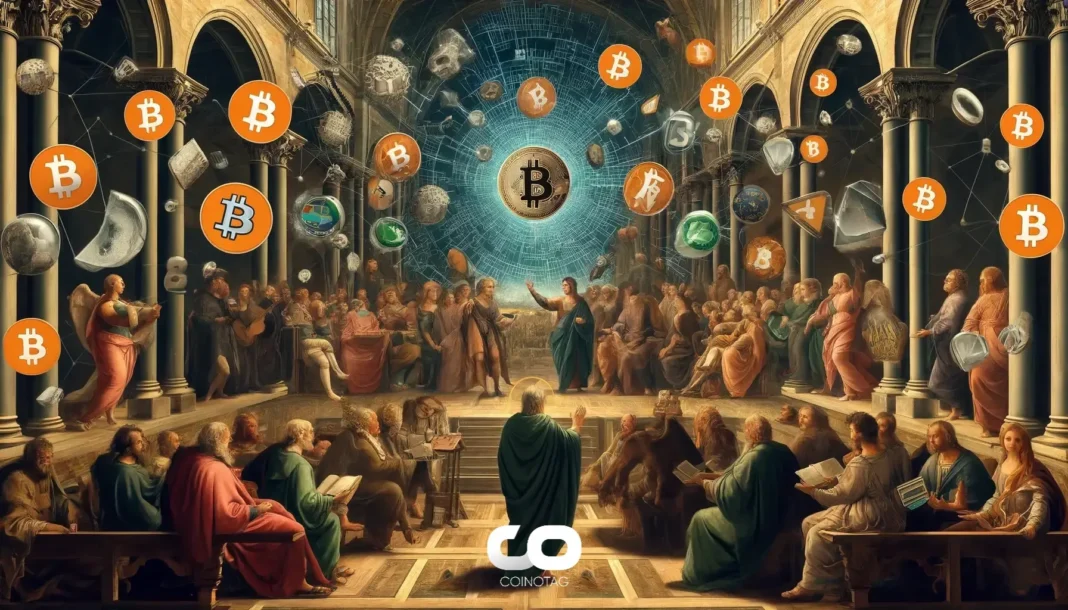-
Bitcoin (BTC) and Ripple’s XRP are emerging as leading contenders to replace the U.S. dollar as the global reserve currency amid rising national debt concerns.
-
Independent research highlights XRP’s unique design tailored for global currency use, contrasting Bitcoin’s limitations as an everyday transactional medium.
-
According to COINOTAG sources, experts like Versan Aljarrah emphasize XRP’s potential role in stabilizing the financial system through tokenized debt anchored by gold.
Explore how BTC and XRP are positioned as future global reserve currencies, driven by rising U.S. debt and innovative financial models leveraging blockchain technology.
BTC and XRP: Leading Candidates for the Future Global Reserve Currency
As the U.S. national debt approaches an unprecedented $36 trillion, financial analysts and blockchain researchers are increasingly questioning the longevity of the U.S. dollar’s dominance as the global reserve currency. Recent studies by independent firms like Sistine underscore two digital assets—Bitcoin and XRP—as the most viable alternatives. While Bitcoin is widely recognized as a store of value akin to digital gold, its inherent design flaws, such as scalability issues and transaction speed, limit its practicality for daily financial operations. In contrast, XRP was engineered with cross-border payments and liquidity efficiency in mind, positioning it as a more functional candidate for global currency use.
Design and Utility Differences Between Bitcoin and XRP
Bitcoin’s decentralized nature and capped supply have cemented its reputation as a hedge against inflation, but its slower transaction times and higher fees impede its use as a transactional currency. XRP, developed by Ripple Labs, offers a faster, more cost-effective solution for international transfers, which is critical for a currency intended to serve as a global reserve. Sistine’s research emphasizes that XRP’s architecture enables seamless liquidity bridging, making it uniquely suited to facilitate global financial flows. This utility advantage is a key factor distinguishing XRP from Bitcoin in the race to become a reserve currency.
Tokenizing National Debt: A New Financial Paradigm Anchored by XRP
Financial strategist Versan Aljarrah proposes an innovative framework to address systemic debt challenges by tokenizing national debt instruments. His model involves the use of RLUSD, a Ripple-backed stablecoin collateralized by gold, to represent sovereign debt on blockchain platforms. XRP would function as the bridge currency, enabling efficient cross-border value transfer and enhancing transparency in debt markets. This approach could mitigate risks associated with traditional fiat currencies and provide a more stable anchor for global finance. Notably, RLUSD has received regulatory approval from the Dubai Financial Services Authority, signaling growing institutional acceptance of tokenized financial instruments.
Implications for Global Financial Stability and Adoption
The integration of blockchain technology with traditional financial systems through assets like XRP and RLUSD could herald a new era of stability and efficiency. By anchoring debt to tangible assets such as gold and leveraging XRP’s liquidity features, this model aims to reduce volatility and systemic risk. Industry experts suggest that such innovations may encourage broader adoption of digital currencies by governments and institutions, potentially reshaping the global monetary landscape. However, widespread implementation will require continued regulatory clarity and technological advancements to ensure security and scalability.
Conclusion
The growing discourse around BTC and XRP as successors to the U.S. dollar reflects broader concerns about fiscal sustainability and the evolution of global finance. While Bitcoin remains a prominent store of value, XRP’s design and utility offer compelling advantages for serving as a functional global reserve currency. The proposed tokenization of national debt, anchored by gold and facilitated by XRP, presents a promising framework for enhancing financial stability. As regulatory environments evolve and adoption increases, these digital assets could play a pivotal role in the future of international monetary systems.







